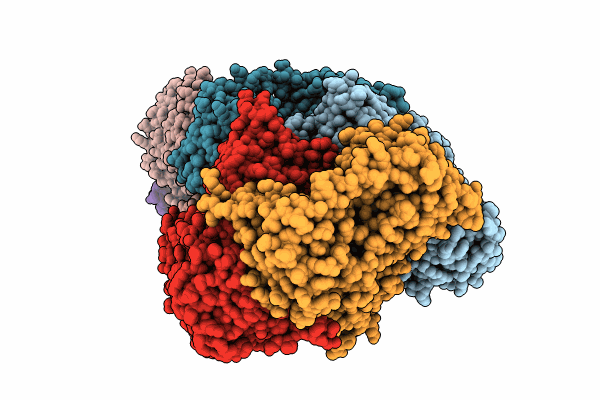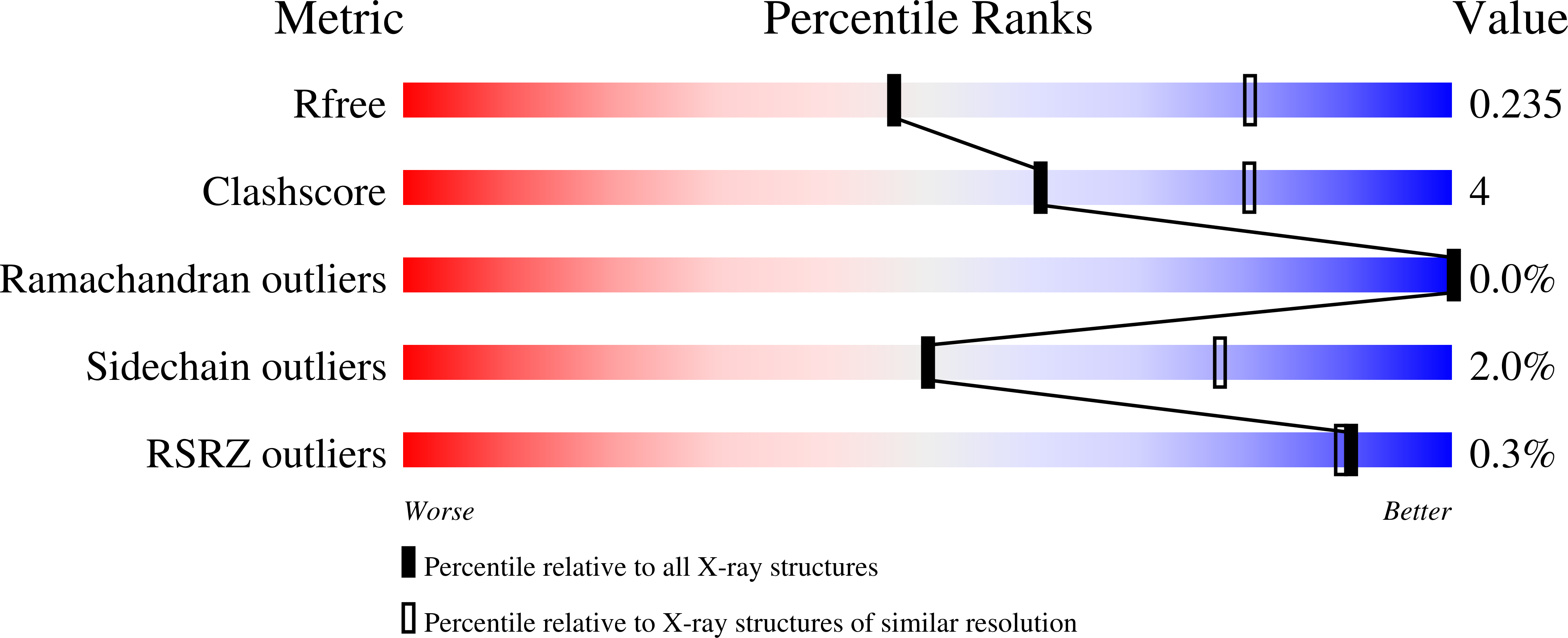
Deposition Date
2024-02-11
Release Date
2024-10-02
Last Version Date
2024-10-02
Entry Detail
PDB ID:
8VZJ
Keywords:
Title:
Crystal Structure of 2-Hydroxyacyl-CoA Lyase/Synthase DhcHACS from Dehalococcoidia bacterium in the Complex with THDP and ADP
Biological Source:
Source Organism:
Dehalococcoidia bacterium (Taxon ID: 2026734)
Host Organism:
Method Details:
Experimental Method:
Resolution:
2.70 Å
R-Value Free:
0.23
R-Value Work:
0.19
R-Value Observed:
0.19
Space Group:
C 1 2 1


